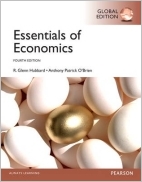| |||||
• polskie
• Zamów informacje o nowościach z wybranego tematu • kontakt |
ESSENTIAL OF ECONOMICS WITH MYECONLABHUBBARD G.P. O'BRIEN A.P.wydawnictwo: PEARSON EDUCATION, 2014, wydanie Icena netto: Essentials of Economics with MyEconLabFor one-semester Principles of Economics courses at two- and four-year colleges and universities Reveal the relevance of economics through real-world business examples One of the challenges of teaching Principles of Economics is fostering interest in concepts that may not seem applicable to students' lives. Essentials of Economics, Fourth Edition makes economics relevant by demonstrating how real businesses use economics to make decisions every day. Regardless of their future career path-opening an art studio, trading on Wall Street, or bartending at the local pub-students will benefit from understanding the economic forces behind their work. This program provides a better teaching and learning experience-for you and your students. It will help you to: * Personalize learning with MyEconLab: This online homework, tutorial, and assessment program fosters learning and provides tools that help instructors to keep students on track. * Show students how economics is relevant: Relatable features ground course material in the real world, showing students how these ideas are relevant and facilitating understanding. * Foster thorough understanding via a flexible, student-focused approach: An engaging, captivating writing style and student-friendly learning aids motivate and engage students. I. Introduction 1. Economics: Foundations and Models 2. Trade-offs, Comparative Advantage, and the Market System 3. Where Prices Come From: The Interaction of Demand and Supply II. Markets in Action: Policy and Applications 4. Market Efficiency and Market Failure 5. The Economics of Healthcare III. Microeconomic Foundations: Consumers and Firms 6. Firms, the Stock Market, and Corporate Governance 7. Consumer Choice and Elasticity 8. Technology, Production, and Costs IV. Market Structure and Firm Strategy 9. Firms in Perfectly Competitive Markets 10. Monopoly and Antitrust 11. Monopolistic Competition and Oligopoly V. Macroeconomic Foundations 12. GDP: Measuring Total Production and Income 13. Unemployment and Inflation VI. Long-Run and Short-Run Fluctuations 14. Economic Growth, the Financial System and Business Cycles 15. Aggregate Demand and Aggregate Supply Analysis VII. Monetary and Fiscal Policy 16. Money, Banks, and the Federal Reserve System 17. Monetary Policy 18. Fiscal Policy 19. Comparative Advantage, International Trade, and Exchange Rates Księgarnia nie działa. Nie odpowiadamy na pytania i nie realizujemy zamówien. Do odwolania !. |


